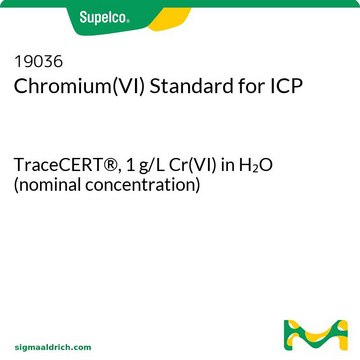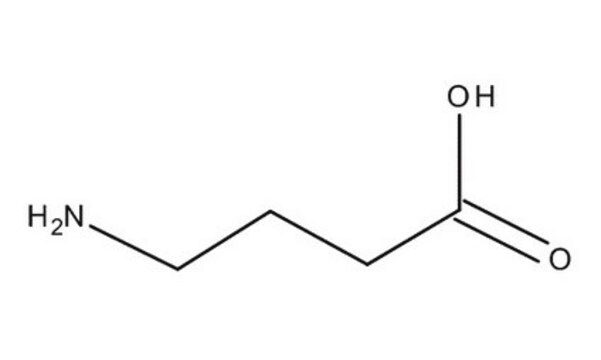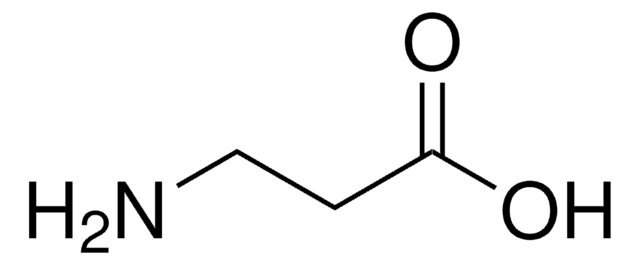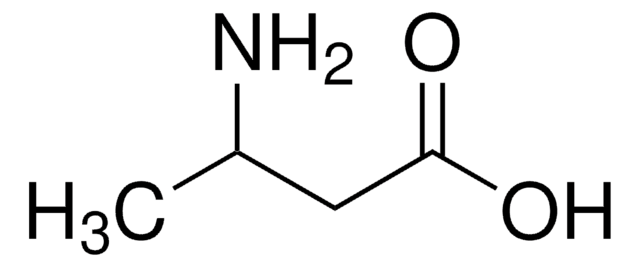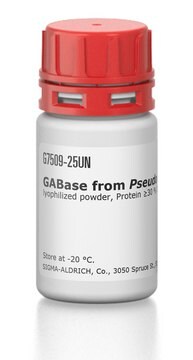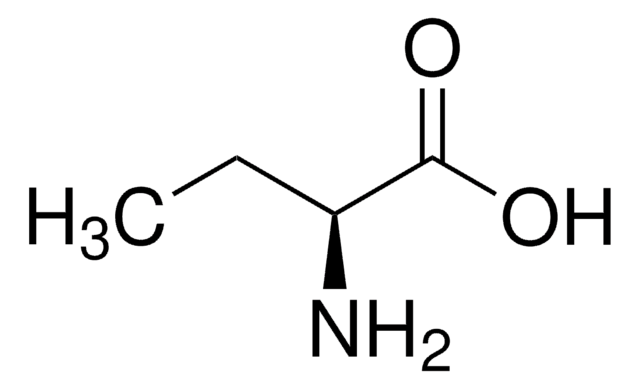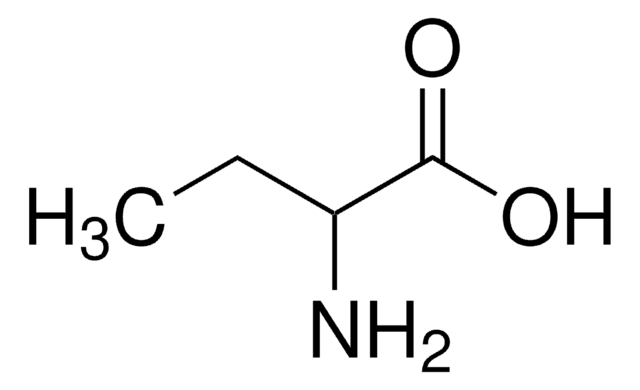A2129
γ-Aminobutyric acid
≥99% (TLC), powder or crystals, inhibitory neurotransmitter
Sinónimos:
GABA, Gammalon, gamma-Aminobutyric acid, 3-Carboxypropylamine, 4-Aminobutanoic acid, Piperidic acid, Piperidinic acid
About This Item
Productos recomendados
product name
γ-Aminobutyric acid, ≥99%
Nivel de calidad
Análisis
≥99%
formulario
powder or crystals
condiciones de almacenamiento
(Tightly closed. Dry.)
color
colorless
mp
195 °C (dec.) (lit.)
solubilidad
water: 50 mg/mL, clear, colorless
cadena SMILES
NCCCC(O)=O
InChI
1S/C4H9NO2/c5-3-1-2-4(6)7/h1-3,5H2,(H,6,7)
Clave InChI
BTCSSZJGUNDROE-UHFFFAOYSA-N
Información sobre el gen
human ... GABBR1(2550) , GABBR2(9568) , GABRA1(2554) , GABRA2(2555) , GABRA3(2556) , GABRA4(2557) , GABRA5(2558) , GABRA6(2559) , GABRB1(2560) , GABRB2(2561) , GABRB3(2562) , SLC6A1(6529) , SLC6A11(6538) , SLC6A12(6539)
rat ... Gabbr1(81657) , Gabra1(29705) , Gabra2(29706) , Gabrb2(25451) , Gabrg2(29709) , Slc6a1(79212) , Slc6a12(50676)
¿Está buscando productos similares? Visita Guía de comparación de productos
Descripción general
Research area: Neuroscience
Aplicación
- in the preparation of GABA–BSA (bovine serum albumin)–GA (glutaraldehyde) conjugate, which is used as a control for GABA immunostaining
- in the macromolecule suppressed detection of GABA by magnetic resonance spectroscopy (MRS)
- in the intraintestinal application of GABA in order to increase intraluminal fluid secretion
Acciones bioquímicas o fisiológicas
GABAergic neurons involve myorelaxation, anxiolytic treatment, sedation, and anesthetics. GABA can also influence heart rate and blood pressure.
GABA improves plasma concentration, growth hormone, and protein synthesis in the brain. It also plays a role in reducing blood pressure in humans. GABA acts as a potent hypotensive, diuretic, and antidiabetic agent. It also regulates serum lipids levels and the sensation of pain.
Producto relacionado
anticuerpo
Código de clase de almacenamiento
11 - Combustible Solids
Clase de riesgo para el agua (WGK)
WGK 1
Punto de inflamabilidad (°F)
Not applicable
Punto de inflamabilidad (°C)
Not applicable
Equipo de protección personal
dust mask type N95 (US), Eyeshields, Gloves
Certificados de análisis (COA)
Busque Certificados de análisis (COA) introduciendo el número de lote del producto. Los números de lote se encuentran en la etiqueta del producto después de las palabras «Lot» o «Batch»
¿Ya tiene este producto?
Encuentre la documentación para los productos que ha comprado recientemente en la Biblioteca de documentos.
Los clientes también vieron
Artículos
Professor Rivnay (Northwestern University, USA) discusses using organic mixed conductors as an alternative to efficiently bridge the ionic world of biology with contemporary microelectronics.
Nuestro equipo de científicos tiene experiencia en todas las áreas de investigación: Ciencias de la vida, Ciencia de los materiales, Síntesis química, Cromatografía, Analítica y muchas otras.
Póngase en contacto con el Servicio técnico


